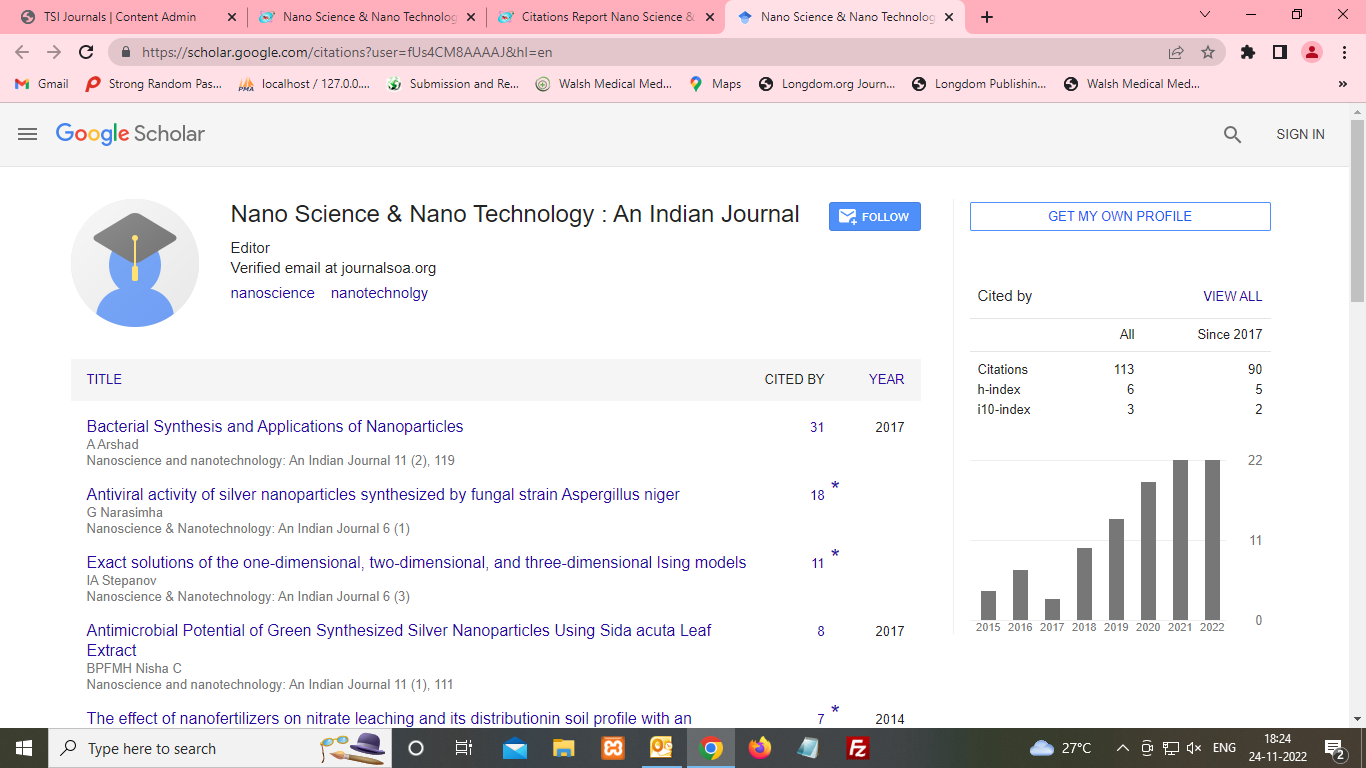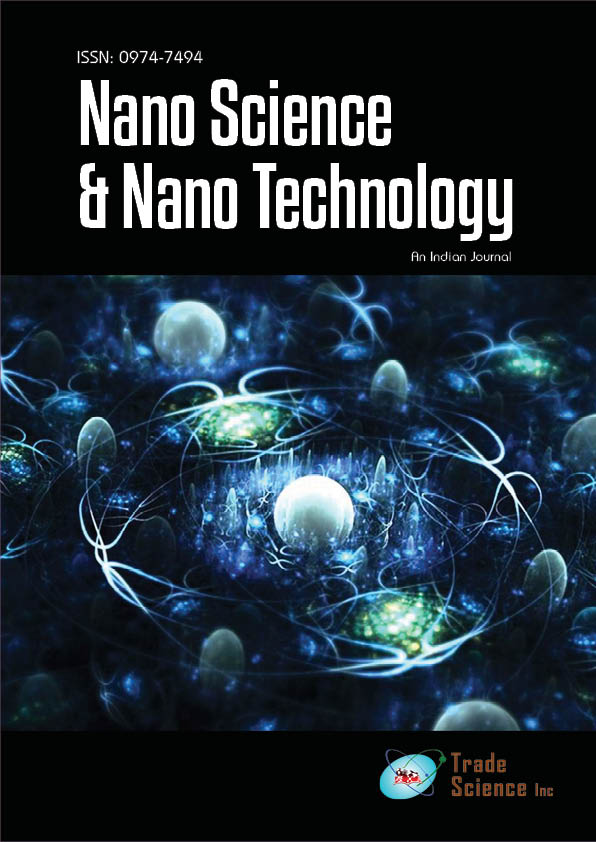Editorial
, Volume: 17( 2) DOI: 10.37532/0974-7494.2019.15(1).132Editorial Note on Photocatalyst: Titanium Oxide Nanoparticles
- *Correspondence:
- Varsha Rai
Department of Chemical Engineering
United College of Engineering and Research, India
E-Mail: varsharai@gmail.com
Received: June 11, 2021; Accepted: June 15, 2021; Published: June18, 2021
Citation: Varsha Rai, Editorial Note on Photocatalyst: Titanium Oxide Nanoparticles. Nano Tech Nano Sci Ind J.2021;15(1):132
©2021 Trade Science Inc.
Semiconductor metal oxide nanomaterials have emerged as one of the most exciting materials, with extensive study in the field of photo catalysis for the degradation of organic contaminants in aqueous solution or the gas phase. Titania has received a lot of interest as a photocatalyst and has been widely employed as a promising technique for the removal of various organic and inorganic contaminants. TiO2 is a potential photocatalyst among all semiconductor photocatalysts due to its exceptional features such as nontoxicity, chemical stability, strong photocatalytic activity, capacity to be coated as a thin film on a substrate, and environmental friendliness [1,2].
Because of their chemical stability, nontoxicity, and high photocatalytic reactivity in the removal of pollutants in air and water, fine TiO2 semiconductor nanoparticles are suitable photocatalysts. TiO2 semiconductor photocatalysts have the ability to oxidise a wide spectrum of organic molecules, including chlorinated organic compounds like dioxins, into innocuous chemicals like CO2 and H2O.
Because of its high sun absorption and strong photocatalytic activity, black TiO2 has sparked a lot of interest. In this paper, we offer a method for synthesising the black TiO2 nanostructure that is aided by hot filament hydrogen plasma. The black TiO2 absorbs more sunlight, particularly in the visible and near-infrared ranges [3].
Low-pressure (e.g., 20 torr) flame synthesis of nanoparticulate (3 nm-10 nm) TiO2 polymorphs, i.e., rutile, anatase, and srilankite (also known as TiO2-II or -PbO2-type TiO2) phases is used to create rutile, anatase, and srilankite.
Although doping TiO2 with metals or nonmetals can boost its visible-light photocatalytic activity, it can also create thermal or structural instability and an increase in carrier entrapment, which can reduce photocatalytic efficiency. The price of employing ion-implantation facilities can also be rather substantial. It was discovered that iron-doped TiO2 produced by the sol-gel technique had a decreased reaction activity for the photodegradation of maleic acid under UV-light irradiation [4].
Ti3+-doped TiO2 has piqued the interest of researchers in recent years due to its ability to absorb visible light. Sasikala et al. discovered that the surface Ti3+ and oxygen vacancies may be responsible for the TiO2-SnO2 composite's increased visible-light absorption. Due to its capacity to absorb visible light, Ti3+-doped TiO2 has aroused the interest of researchers in recent years. Sasikala et al. observed that the higher visible-light absorption of the TiO2-SnO2 composite might be attributed to surface Ti3+ and oxygen vacancies.
Nanosized TiO2 particles, highly dispersed titanium oxide species within zeolite cavities, titanium-oxide-based binary catalysts, second-generation TiO2 photocatalysts that can operate under visible light irradiation via advanced metal-ion implantation, and visible-light-responsive TiO2 thin-film photocatalysts, as well as various characterizations of these photocatalysts [5,6].
References
- Mohamad Idris N, Rajakumar J, Cheong K, et al. Titanium dioxide/polyvinyl alcohol/cork nanocomposite: A floating photocatalyst for the degradation of methylene blue under irradiation of a visible light source. ACS Omega. 2021;6(22):14493-503.
- Yamakata A, Ishibashi T, Onishi H. Time-resolved infrared absorption spectroscopy of photogenerated electrons in platinized TiO2 particles. Chem Phys Lett. 2001;333(4):271-7.
- Singh N, Rana M. S, Gupta R. K. Modelling studies for photocatalytic degradation of organic dyes using TiO2 nanofibers. Environ Sci Pollut Res. 2017;25(21): 20466-72.
- Sivarao T, Radha DC. Synthesis of visible light driven cobalt doped nanotitania assisted by triton X-100: Characterization and application in photocatalytic degradation of congo red. Nano Sci Nano Technol. 2017;11(2):117.
- Xing Mingyang, Fang Wenzhang, Nasir Muhammad, et al. Self-doped Ti3+-enhanced TiO2 nanoparticles with a high-performance photocatalysis. J Catal. 2013;297(1):236-43.
- Sarkar, Khan Ayan, Gopal Gobinda. The formation and detection techniques of oxygen vacancies in titanium oxide-based nanostructures. Nanoscale. 2019;11(1): 3414-44.

